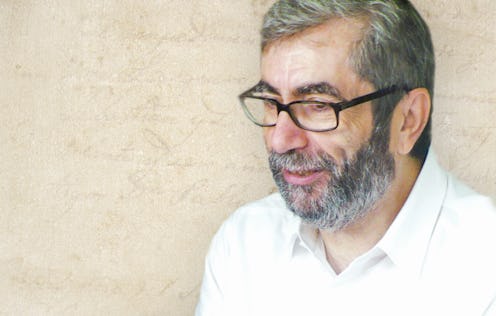Books
'In the Night of Time': a Mesmerizing Spanish Tale

Antonio Muñoz Molina’s In the Night of Time (Houghton Mifflin Harcourt) is an epic novel — in both scope and physical size — that details one man’s experience surviving and escaping the Spanish Civil War, a fight between liberal Republicans and conservative fascists that tore the country apart during the late 1930s. Translated from the original Spanish into English by the talented Edith Grossman, In the Night of Time is a sweeping, mesmerizing tale that weaves seamlessly between Spain and America, present and past, personal and political.
Ignacio Abel, the novel’s protagonist, is an architect who has come to America to build a college library. The novel opens with Abel’s arrival at Penn Station, and it is a dazzling opening, too, one that delivers atmosphere and develops character and hints at the novel’s philosophical underpinnings all at once. Then the book slips back in time, to when Abel was still in Madrid with his family, carrying on a secret affair with an American scholar, walking the streets of Madrid where streetcars burned and clashes broke out nightly, suffering through the “permanent sense of suspended reality and frustration.” But this is not the only historically significant moment Abel witnesses; during his younger days, in the earlier decades of the twentieth century, Abel studied his craft at the Bauhaus, a very important center for Modernist art and architecture. This kind of maneuver, situating a seeming everyman in major historical situations that in retrospect have taken on a larger-than-life quality, could feel contrived, but Molina’s focus on Abel’s personal experiences saves the novel from indulging in a Forrest Gump Effect.
Molina, with many novels under his belt, has clearly mastered the associative style of stream of consciousness writing. For example, in a compelling description of the turbulent Spanish Civil War, Abel remembers his family, and then the destruction of his city. As a man who builds, and knows how hard it is to do so, Abel is particularly well positioned to help the reader grasp the physical as well as psychological effects of war:
Miguel crying in his room, red-faced, surrounded by the ruins of the Meccano, too much crying for his age, his sister looking at him with annoyance from her desk; teams of dynamiters in the late July heat and the first hallucinatory days of the war attempting to blow up the monument to the Sacred Heart of Jesus on Los Angeles Hill, bringing large augers and hammer drills on truck from Madrid, squads of militiamen firing their rifles in successive volleys at the enormous statue, its arms spread wide…
The close association of intimate and public history, as well as the liquid, dream-like yet jarring quality of Molina’s language feels akin to what is perhaps the most iconic visual representation of the Spanish Civil War: Picasso’s Guernica, a black-white-and-gray painting depicting the pain of those tumultuous, fratricidal years. Unlike Guernica, Molina’s novel isn’t an explicit commentary on the Spanish politics of the moment, but with the country dealing with staggering unemployment, a growing extreme right, and protesters marching down the same streets Abel walks, it’s hard not to draw comparisons between the conflicts of now and then while reading Molina’s accomplished book.